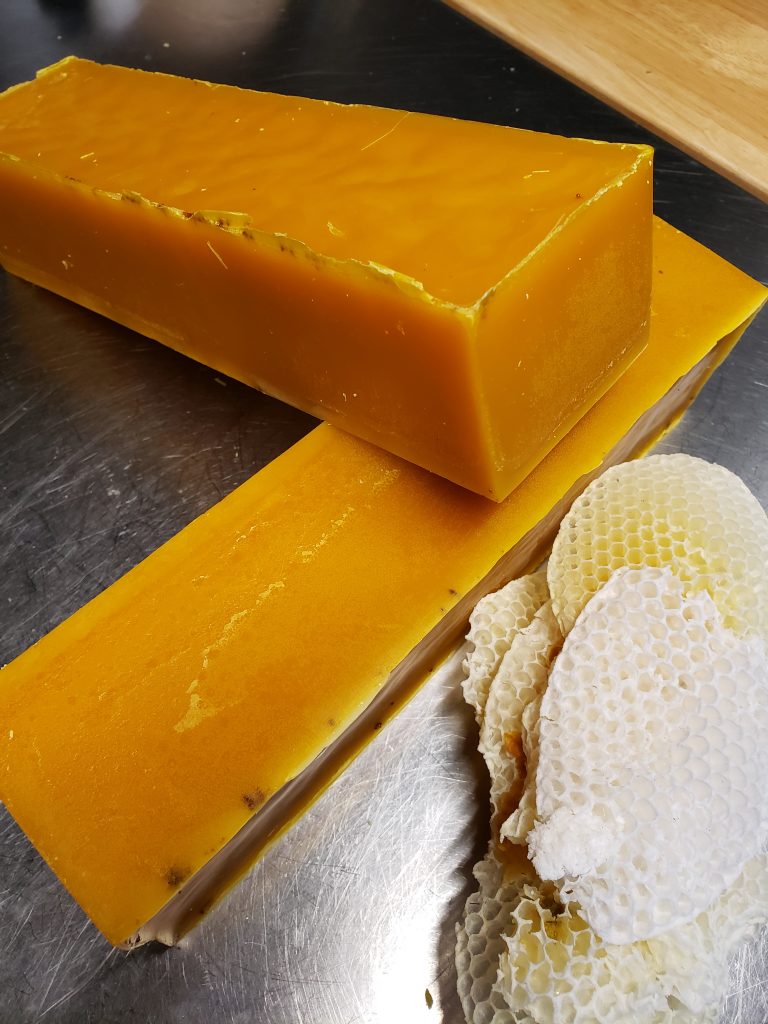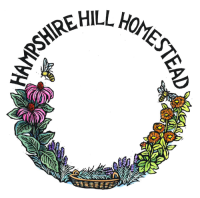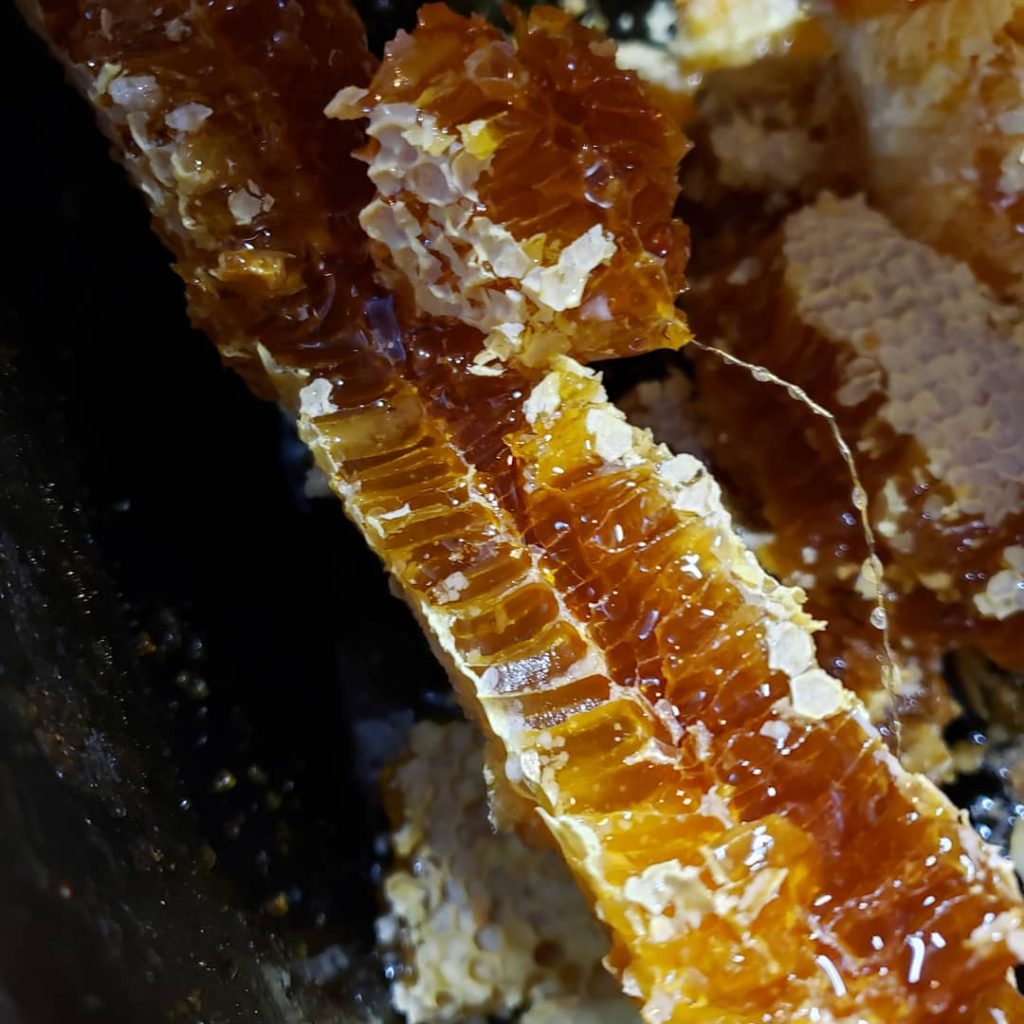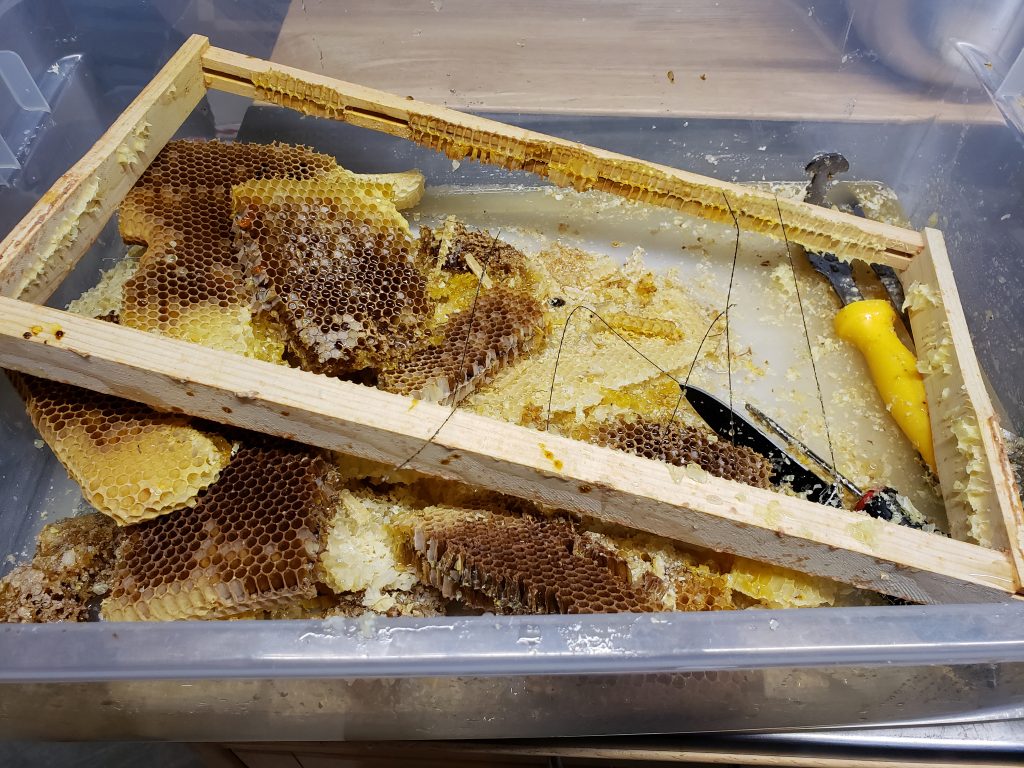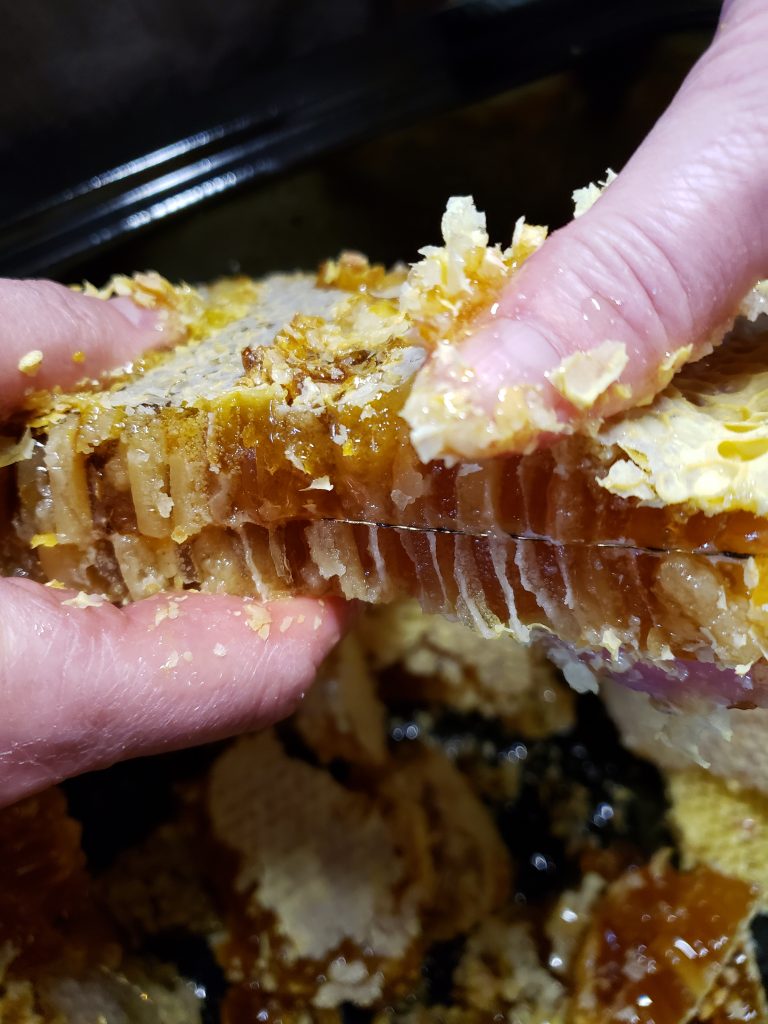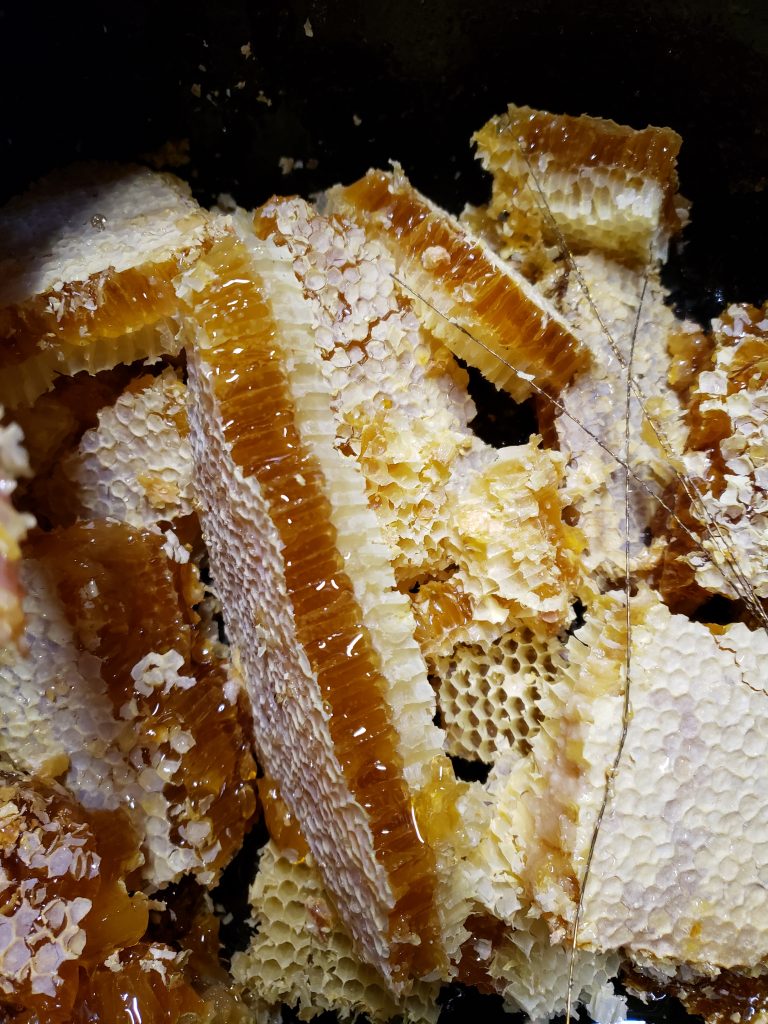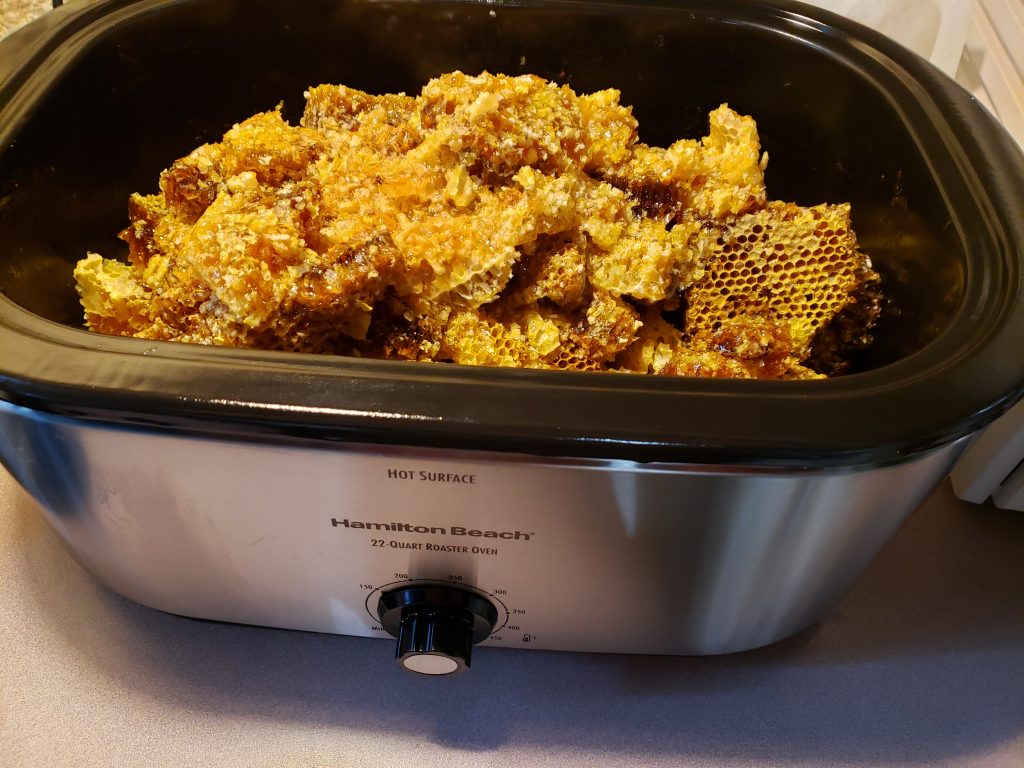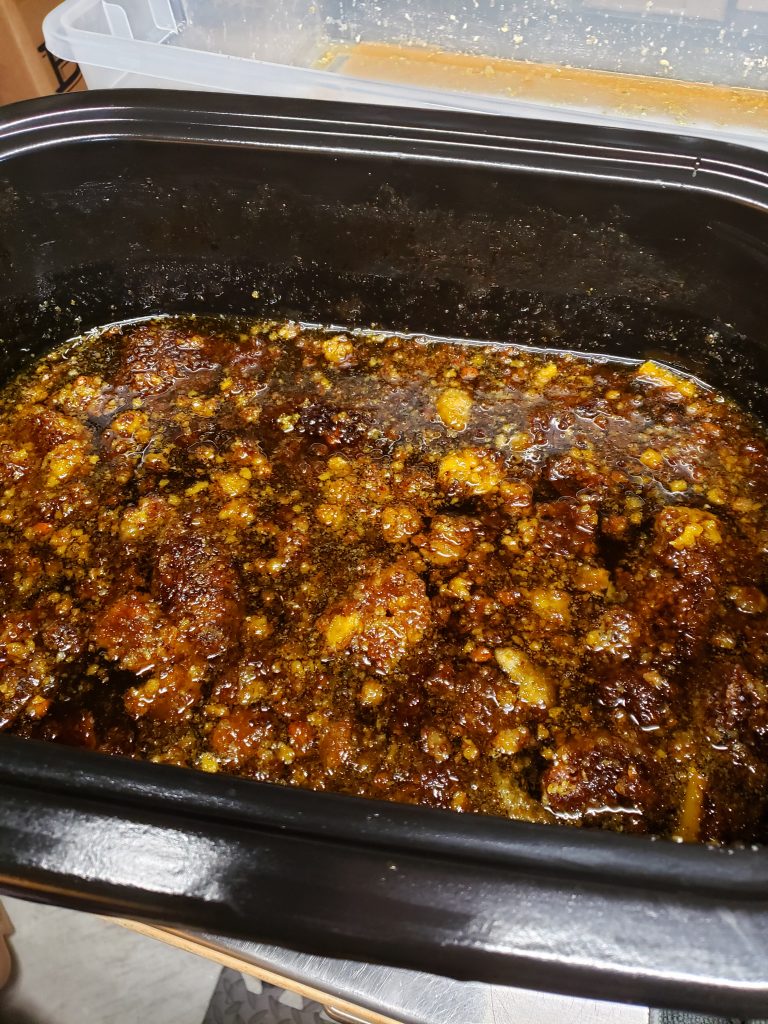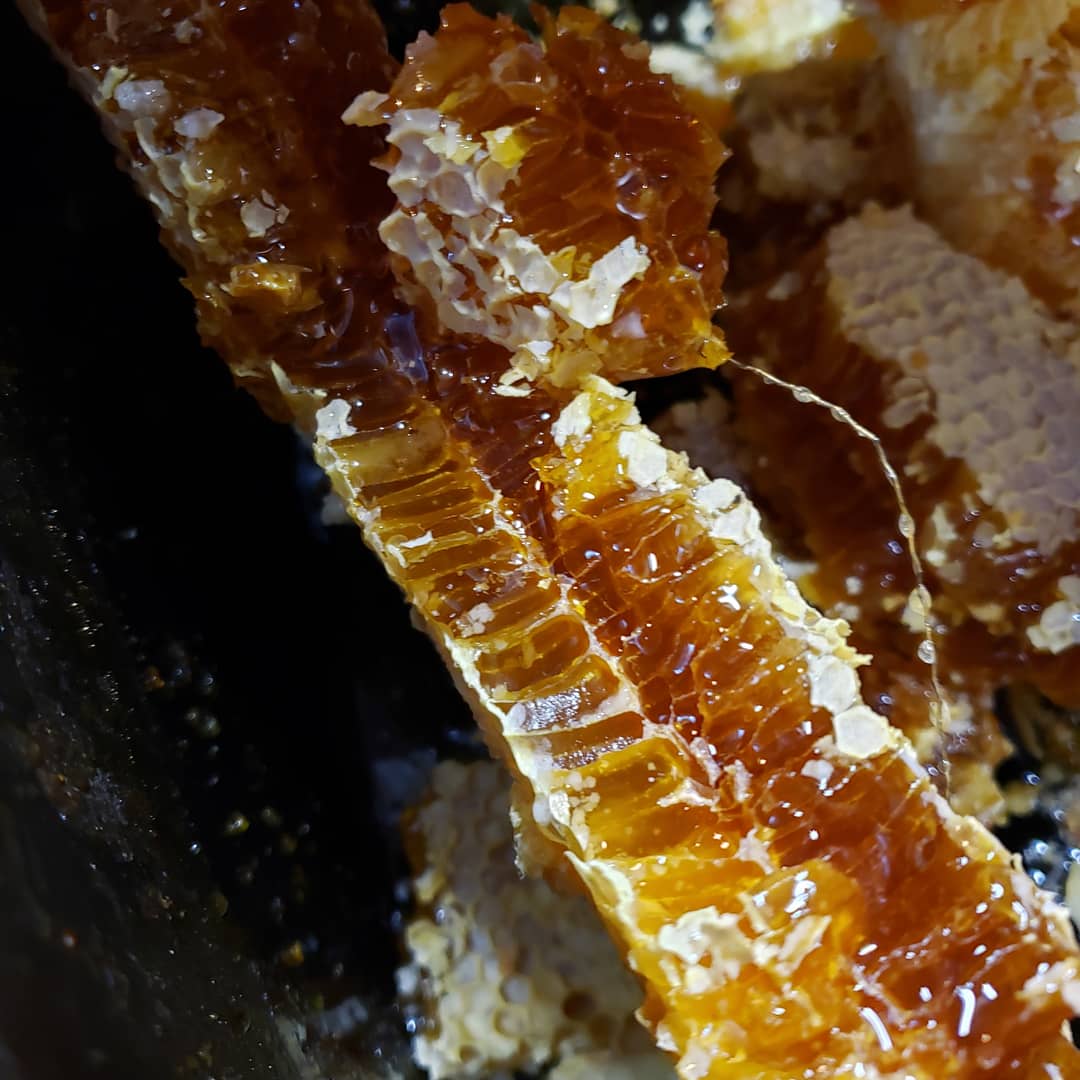
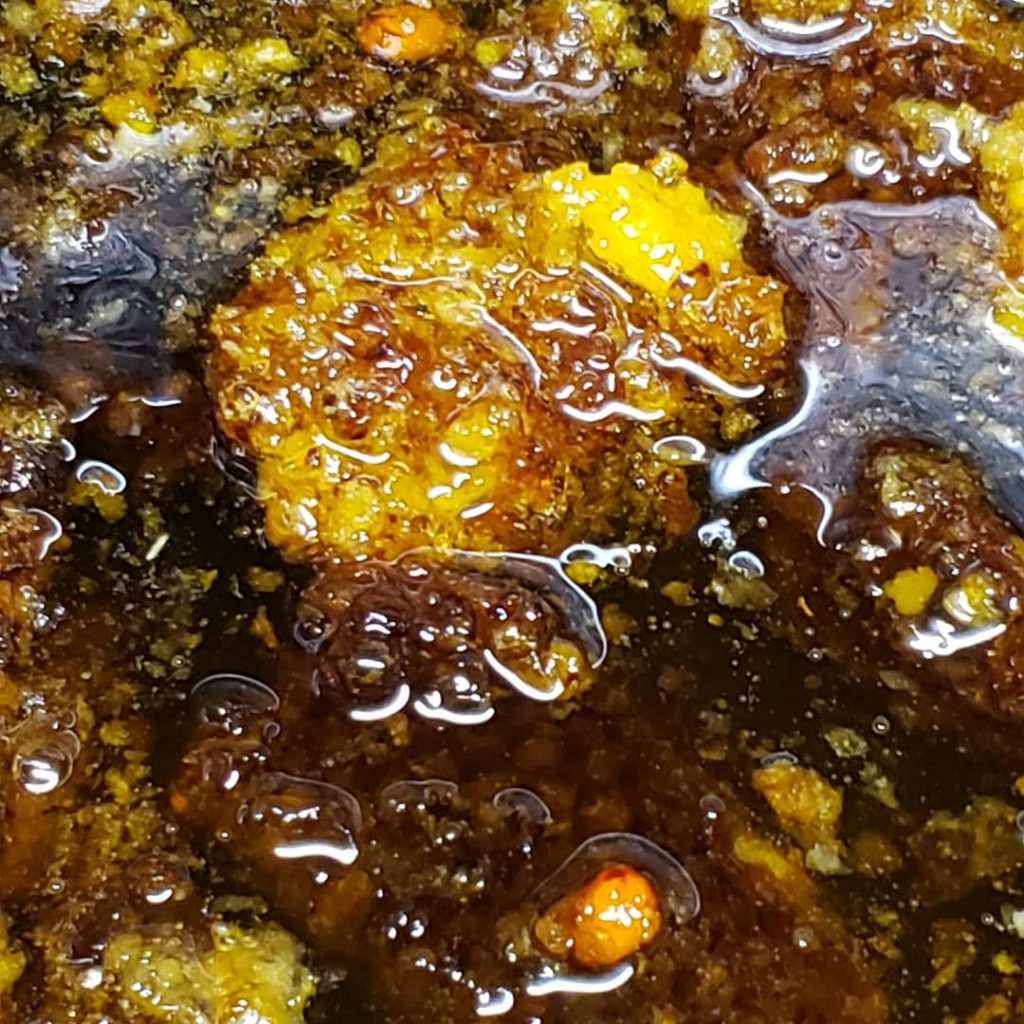
Sadly our bees did not survive the winter 2019/2020. This happens. Maybe weather, maybe mites, maybe virus, not sure. I have spoken with several area beekeepers and this year was a particularly difficult winter for many of them.
When we harvest honey during the summer the process is pretty straight forward, uncap frames and spin out. When I take apart a hive that has honey in it that overwintered outside it is a whole different story.
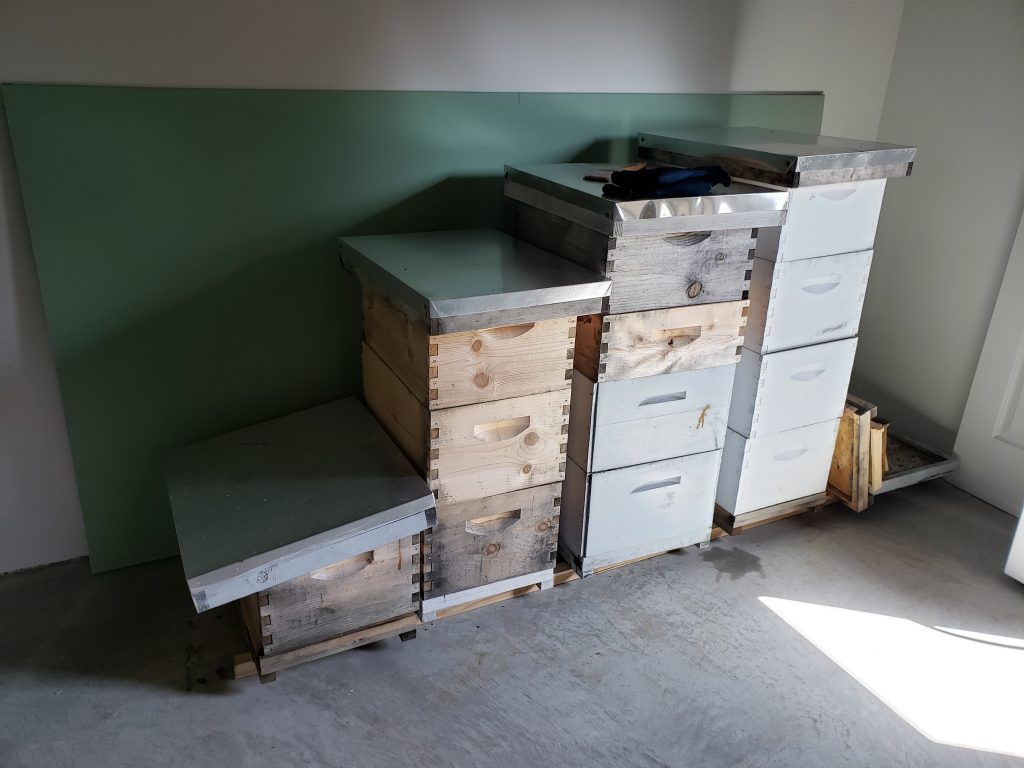
Once we determined that the hives hadn’t survived we opened them up, brushed off any remaining bees and brought the boxes into the basement. We did’t want any hungry bears awaking from their long sleep to smell the hives.
When honey is extracted fresh and bottled if there is no heating or filtering it is called “raw”. Most consumers value the raw honey over the other because it contains all of the benefits.
When honey overwinters outside, especially in these cold climates it thickens and even crystallizes because the air is dry and moisture evaporates out of it. This thick honey is difficult if not impossible to extract the traditional way.
I try to get at least some of it out without using heat but it is very difficult. This video shows how thick it is. Gorgeous but very thick.
For some of the frames if the honey seemed less thick I broke up the comb and put it in the sieve to drain through and provide some raw honey. This video shows what was left after the honey/wax/crystallized honey went through the course sieve. I was using the spatula to try to allow more through. Below the sieve you can see lots of raw honey.
So what to do with the thick stuff??? I opt to break it all up and warm it up as little as possible but enough to thin the honey enough to separate it from the wax and crystallized honey. These photos show what it looks like when breaking it off the frames. In the center photo you may notice some of the cells have golden honey and other have white/yellow solid contents, this is crystallized honey.
Once I broke up the comb, removed the thin wires (they are built into the foundation that the bees draw out their comb on) and filled the crock pot as full as it would go I set it to the lowest setting I could to thin out the honey.
Once it seems that the honey is liquid but the wax isn’t melting (wax melts at higher temperature, don’t want the honey that warm) I ladled the warm goodness through a sieve and into jars. Watch this video for some satisfying action.
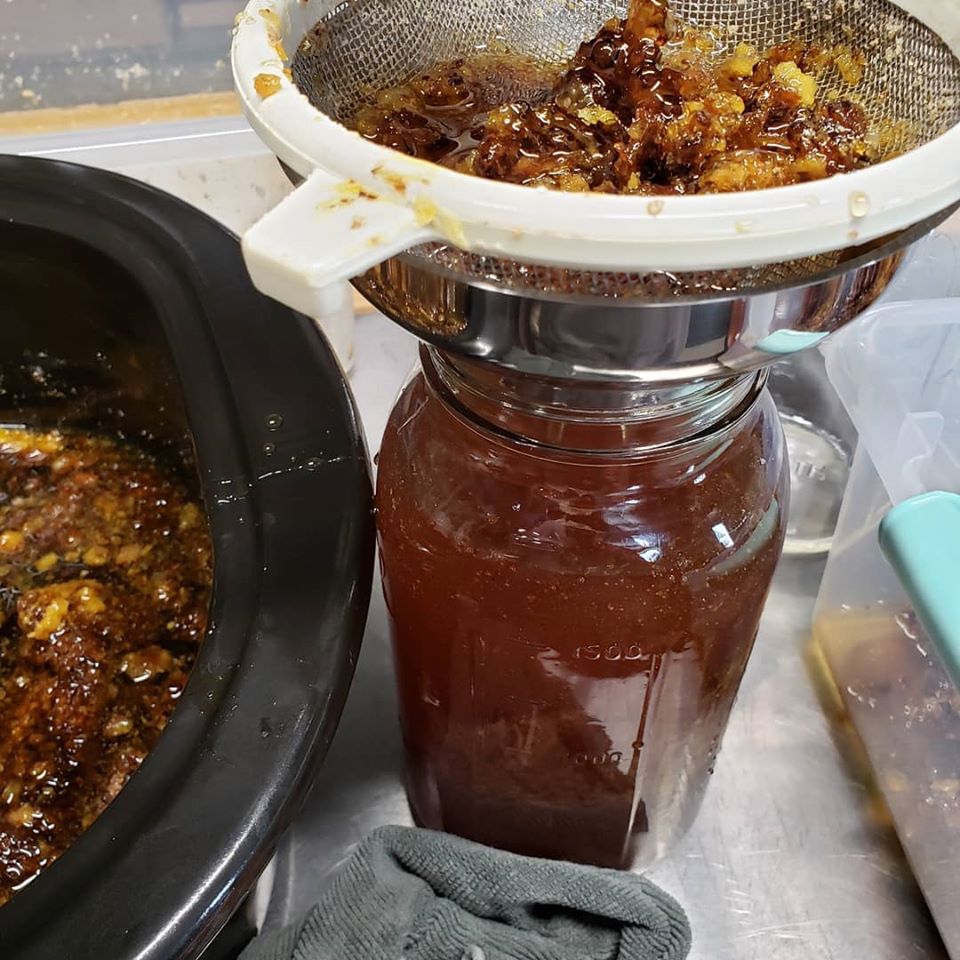
Some of the larger bits in the sieve needed to be squeezed out to get all of the honey out. Sticky, sticky business.
So far I have only processed about half of the boxes in the basement and I have about 84 pounds or 7 gallons of honey!
For a bonus I also got 4 pounds of gorgeous beeswax to use in my products.
